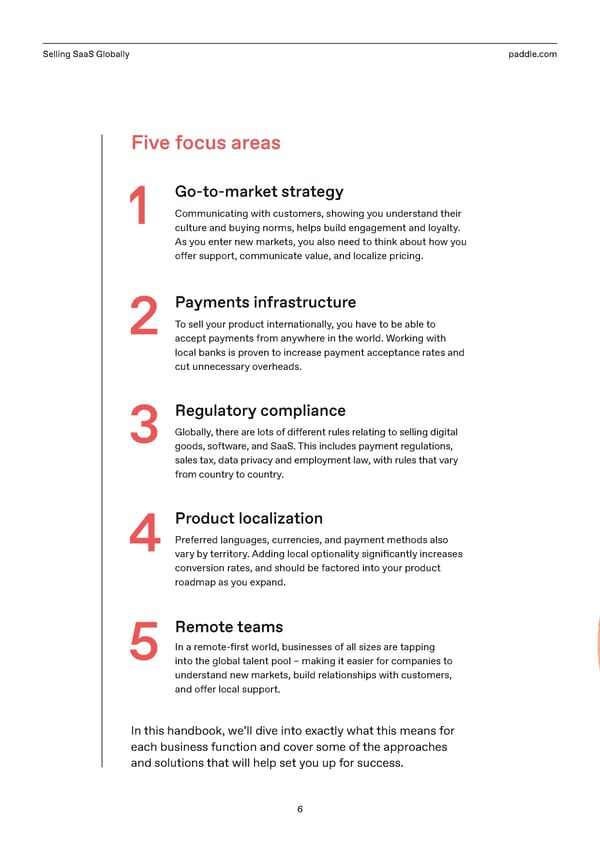Selling SaaS Globally paddle.com Five focus areas Go-to-market strategy 1 Communicating with customers, showing you understand their culture and buying norms, helps build engagement and loyalty. As you enter new markets, you also need to think about how you o昀昀er support, communicate value, and localize pricing. Payments infrastructure 2To sell your product internationally, you have to be able to accept payments from anywhere in the world. Working with local banks is proven to increase payment acceptance rates and cut unnecessary overheads. Regulatory compliance 3Globally, there are lots of di昀昀erent rules relating to selling digital goods, software, and SaaS. This includes payment regulations, sales tax, data privacy and employment law, with rules that vary from country to country. Product localization 4Preferred languages, currencies, and payment methods also vary by territory. Adding local optionality signi昀椀cantly increases conversion rates, and should be factored into your product roadmap as you expand. Remote teams 5In a remote-昀椀rst world, businesses of all sizes are tapping into the global talent pool – making it easier for companies to understand new markets, build relationships with customers, and o昀昀er local support. In this handbook, we’ll dive into exactly what this means for each business function and cover some of the approaches and solutions that will help set you up for success. 6
 Selling SaaS Globally | Handbook Page 5 Page 7
Selling SaaS Globally | Handbook Page 5 Page 7